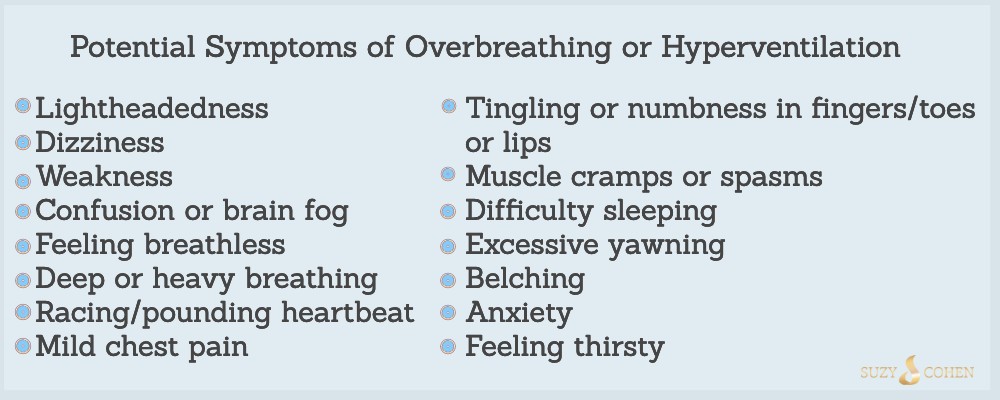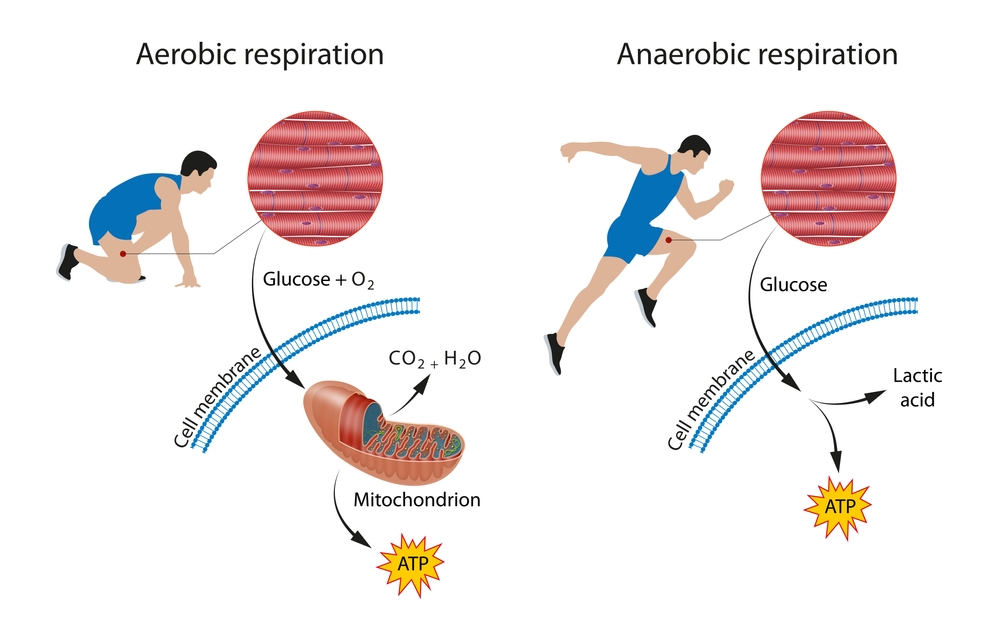What's On This Page?
ToggleWe’ve all felt tired at one point or another, but not everyone experiences exhaustion. I’ll get to it shortly but first I’d like us all to relate to the most common types of fatigue. For example, we may experience daytime fatigue after a sleepless night. Or perhaps there is stress in your life as it pertains to a troubled teen or the loss of your job. And then there is medication-induced fatigue like that experienced after taking Benadryl® or any other sedative. There are dozens more causes of fatigue too.
The ‘picture of fatigue’ in these cases is self-limited and temporary. But what if you’re one of those people that is so tired, and exhausted that you feel limited in your ability to perform daily tasks? What if your fatigue is more like exhaustion, and hinders your ability to enjoy life?
Here are 6 examples that you might relate to:
1. You go to Pilates, and 15 minutes in, you feel short of breath (or breathless), and perhaps slightly dizzy. You might feel a strong, racing heartbeat.
2. You try to go jogging for 3 miles like you used to, but you have to stop within a mile due to the inability to catch your breath, and then you come home and lie down for the rest of the day!
3. You go from your bedroom up the stairs to your child’s bedroom, and by the time you get upstairs, you’re weak, short of breath, and need to sit down to catch your breath. Sometimes you have to sit down on the stairs mid-way!

4. You’re so tired that you mentally debate whether you can go run errands or do something that requires physical energy. You know you are going to pay a price or be unable to complete the task.
5. You go to the grocery store and wish you could ride one of those electric carts, but you don’t dare, because on the outside you look great. People might stare at you and think you’re lazy. But you are having trouble catching your breath at the front door, and all you did was walk from your parking spot to the entrance!
6. You don’t like the heat, it feels like it weakens you and you might faint if it’s too hot.
Sound familiar? This type of exhaustion is very common, and most people don’t know why they feel this way, and for that matter, how it happened! Today, I’d like to shed light on a little-known, but extremely common cause of persistent exhaustion.
Post Viral Fatigue Syndrome – PVFS.
If you’ve ever had a viral infection in your life, even 30 years ago, you might still be tired of it! PVFS is a real disorder, and from its name, you can see the hallmark feature is FATIGUE. In fact, the ICD-10 code for this is G93.3 allowing doctors to specify “PVFS” as a diagnosis for people, that is… when it’s even recognized.
You may not even realize that you are carrying a virus because some lay dormant in your body. Think of chickenpox, and the souvenir of shingles that comes back later on. The Varicella Zoster Virus that causes chickenpox takes up residence in the brain and spinal cord forever. How about a regular cold?
If you’ve ever had a bad cold, which by the way could be caused by older coronaviruses, or if you’ve had the flu caused by influenza, you could have PVFS now. Did you completely recover, or do you still feel exhausted?
If you’ve had COVID-19 then it’s quite possible you have PVFS now. We see more and more post-COVID problems affecting the heart, neurological system, blood vessels, lungs, and of course, mitochondria! I predict we’re going to see a lot more people left with PVFS as a ‘souvenir’ from the COVID they’ve recovered from.
That’s part of why I’m raising awareness for it. Here’s a lovely, informative ARTICLE that I found on PVFS and COVID, published by the Myalgic Encephalopathy Association in the UK. If you had “mono” virus in past years (it’s called the kissing disease), then the Epstein Barr Virus may have left you with PVFS. Are you still tired?
Lyme Disease
Tick bites leave people with chronic Lyme disease or co-infections if they are not completely treated upon infection. Many people have no idea they are suffering from Lyme, but it is a very common, underdiagnosed cause for chronic fatigue!
With Lyme fatigue, the Borrelia burgdorferi spirochete and possible co-infections hide in the body, and you may not have a whole lot of symptoms to make this illness obvious. But the fatigue may be VERY present and persistent. Test yourself properly through Igenex if you do not respond to typical energy-producing stimulants or supplements.
My reasoning for Lyme testing is that you may have just one or two symptoms such as fatigue (or mild depression), and you don’t connect those to a tick bite you had 10 years ago. But whether or not you know you have had Lyme, or mono, or the flu, or any other virus… PVFS is a very real illness and intractable fatigue is its hallmark feature!
How about chickenpox? Or flea bites… Bartonella (from a cat scratch), West Nile (from a mosquito), HIV or any other virus… you could have residual post-virus fatigue! If you’re super weak and tired with no other explanation, and all big things have been ruled out, you probably do!
How Does Fatigue Feel?
It feels different to each person. Fatigue is subjective. In many cases, it will affect breathing. We take breathing for granted because it is so involuntary, but a viral infection can change that pattern permanently, and at times cause you to feel breathless, or short of breath. For some people, undergoing chemotherapy or having a panic attack brings on the same problem.
Some patients with exhaustion experience disturbed breathing, manifested as mild hyperventilation – not the type that requires medical intervention- and it is also sometimes called over-breathing or dyspnea.
Whatever you want to call it, it goes hand in hand with PVFS, which by the way usually gets diagnosed as something else like CFS or “Chronic Fatigue Syndrome a.k.a. CFIDS (Chronic Fatigue Immune Dysfunction) or ME (Myalgic Encephalomyelitis).
You may want to read about adrenals in my other article, 4 Tests to Check for Adrenal Fatigue.
Overbreathing is a Type of Hyperventilation
Some of you have felt this type of mild hyperventilation or over-breathing. For example, you get up to do something, like get the mail from the mailbox or go upstairs. By the time you get back to your seat, you’re low on energy, maybe you have to sit down, and you start breathing very hard. You don’t feel well, but you’re not technically tired, you’re still mentally sharp and could lift weights if you had to. Yet you feel so weak and breathing is hard! I call it breathless fatigue!
Let’s Talk About Breathing
As you know, when you inhale, you take in oxygen, and when you exhale, you breathe out carbon dioxide. When you exert yourself, for example, while going to get the mail or going upstairs… or maybe jogging… you take in more breaths per minute than normal. When you breathe a little bit faster, this quick exchange naturally alters your blood gasses causing CO2 levels to suddenly drop in your bloodstream.
For most people that’s okay, they can maintain homeostasis. But for people with PVFS (or Lyme, or CFIDS) it’s this process that causes them to feel bad. The medical term in case you are researching this is called “respiratory alkalosis,” but it’s mild, not the emergency type. And during the episode, the pH of your blood rises very slightly (normal is 7.35 – 7.45) while CO2 levels go down in your bloodstream.
To be cautious, please ask your personal physician to do a complete cardiovascular evaluation to rule out heart and kidney issues because breathing heavily can go hand in hand with heart disease as well as kidney disease. Kidney failure may lead to a buildup of fluid in your lungs, which can cause shortness of breath, so again, please be smart and just rule out the obvious causes of “breathless fatigue” as I call it.
Now, let’s go back to my point. Excessive breathing will induce low levels of carbon dioxide in your blood, termed hypocapnia, which causes the symptoms below. Asthmatics deal with that condition too.
Additionally, you will suddenly be faced with excessive cytokines (inflammatory chemicals) – it’s like a bomb going off in your body: Peroxynitrites, ROS and Hydrogen Peroxide! Catalase will work for that last one by the way, because it chemically converts hydrogen peroxide to oxygen and water.* See my graphic here, this happens millions of times per minute.

A Better Description of Overbreathing aka Hyperventilation from PVFS
This type of exhaustion may, or may not be associated with muscle weakness, making it hard to describe to your doctor. When they hear you’re tired, it’s almost always diagnosed as hypothyroidism or depression. But it is the exhaustion of a different sort. That’s not to say you couldn’t have either of those other conditions, but you don’t have to have them to have PVFS.
Part of the difficulty is that you may feel awake, and be mentally coherent, but within minutes of doing something physical, you suddenly feel depleted and your breathing heavy again. The mitochondria might be weak and therefore unable to produce ATP like normal.
Treatment Options
To understand the treatment, you have to understand that heavy chest breathing stems from over-oxygenation and depletion of CO2. During hyperventilation (over breathing) the amount of blood flow to your brain is reduced. Furthermore, the oxygen you do have binds more tightly to the hemoglobin in your blood, and the net result again, is reduced oxygenation flow to the brain for a short period of time, until you sit down and catch your breath.
Mild hyperventilation causes a chronic mild deficiency of phosphorus and/or magnesium. These nutrients are needed to make ATP, your energy molecule. Your muscles need ATP and if you’re deficient in that, your muscles will fatigue very quickly, and you’ll feel weak on top of feeling breathless.

18 Solutions To Help Chronic Fatigue
I have some ideas that could help you, but I’m not a physician so these are just my thoughts. Please discuss these ideas with your doctor, and again, get a complete work-up if you deal with chronic fatigue.
1. Breathe slowly into your mask if you’re wearing one, or cupped hands. Take a breath in for 5 seconds, and then breathe out for 5 seconds.
2. Pinch close one nostril and breathe through your nose. It’s impossible really to hyperventilate if you’re breathing through your nose because you can’t move as much air.
3. Breathe through pursed lips for the same reason as #2 above.
4. Inhale down to your diaphragm (it’s called belly breathing), rather than taking shallow breaths in your chest.
5. Hold your breath for 5 to 10 seconds.
6. Consider Catalase once daily, to support healthy cellular metabolism of peroxide.* This is sold online and I even have my own brand of this which I put into acid-resistant capsules. Catalase neutralized H2O2 which is an oxygen-based free radical! Too much is harmful. This oxygen-mediated cell toxicity was studied and the researchers found that Catalase was useful.
7. Consider L-Cysteine or NAC (N -Acetylcysteine) 600mg twice daily to support glutathione levels and brain health.* Another study from 1991 discusses NAC, as well as Catalase and SOD. Even though they say that the “… oxygen [free] radical scavengers Superoxide Dismutase and Catalase … are not routinely available for clinical use,” that is actually no longer true. Today, both of those supplements ARE available as over-the-counter supplements. Here’s another link about NAC which from the Journal of Neurosurgery.
A note of caution about NAC. It is not for everyone. Some people with Lyme may react to this because it appears to unravel the biofilm of Borrelia, so if you take it and react, that could be very telling for you. There are many articles on pubmed regarding this. Here’s just one ARTICLE from 2014.
8. Consider S.O.D. (Superoxide Dismutase) to neutralize the oxygen-free radicals and ROS. This is sold online and at some health food stores.
9. Consider taking a sublingual ATP supplement which offsets the damage done by the lack of oxygen to your brain. You might like this right before you work out. This is sold online.
10. Consider treatment of the viral infection if the benefits are better than the risks. Your treatment plan could be conventional, natural, or a combination. Supporting immune function is important through diet and anti-viral herbs.
11. Learn healthy breathing techniques including diaphragmatic breathing. Also, increase the length of your inhale. The reason for this is that most people with breathless fatigue tend to inhale briefly while exhaling longer, so correcting this pattern could be helpful.
12. Sleep with your mouth closed, this might improve CO2 (carbon dioxide) levels. There are some companies that make soft tape to help you keep your mouth closed while sleeping.
13. Consider taking Vitamin D each day. This nutrient offsets the loss of Vitamin D production that goes with having respiratory alkalosis according to this STUDY.
14. Consider a high-quality magnesium supplement. This can make a difference in energy levels because it’s part of the KREBS cycle, especially if you drink coffee for energy because coffee is a ‘drug mugger’ of magnesium. Furthermore, your Krebs cycle requires magnesium to make intermediates (citrate and malate) which are needed to create ATP. This is an energy molecule that your lungs, muscles, and brain require.
15. Vitamin E could help you mitigate oxidative stress, but finding a high-quality version of this nutrient, in its natural form with all 8 isomers is impossible! Don’t take synthetic.
16. Vinpocetine or ginkgo Biloba may be useful. My rationale is that mild hypocapnia leads to cerebral vasoconstriction. That means your brain is starving slowly. Ginkgo has a potent antioxidant effect, and induces arterial vasodilation, bringing more oxygen to the brain. That’s why it’s used for people who travel to the mountains and experience “mountain sickness” or “high altitude sickness.” It’s also useful for recall and memory.

17. Try to find a better stimulant as you begin to feel better. While caffeine pills (and even products like TeaCrine®) are useful for instantly boosting alertness and energy, and most people with chronic fatigue rely on it, caffeine actually decreases cerebral blood flow.
Make it a goal to create your own energy and solve the core of the problem rather than masking it. I understand that you may need it right now, and that’s fine, I’m just suggesting that over time, you try to find natural ways to create the energy, rather than take it in a pill form.
18. Betaine with Pepsin – this can be very powerful for some of you if you have breakfast fatigue. Try a lower dose like 500 mg before titrating up. It can be particularly useful for people with methylation problems too.
While you’re on the path to testing and treating yourself more gently, consider gentle exercising if you can. I believe in moving the body, and if it’s possible for you then try to accomplish this several times a week. Not only does it build confidence in your ability to heal, but it also keeps your muscles healthy. So do lighter exercises instead of high-impact. I probably don’t need to tell you this.
The reason I am is that some people still feel the need to “push harder” and live by the adage, “no pain, no gain,” but when you’re body is in this state, it’s not the right time to push harder. So consider gentler forms of exercise such as yoga, tai chi, walking (instead of jogging), cycling so you can pace yourself, or dancing.
Hopefully, this article has helped you understand more about your type of fatigue and exhaustion. If it lends insight into the etiology of your illness, I would be very happy for you. Knowing what happened to you, and what is wrong in the first place is the only way for you to get well once and for all. And I know you are ready to get back to life!
Please share this with someone in need.

Suzy Cohen, has been a licensed pharmacist for over 30 years and believes the best approach to chronic illness is a combination of natural medicine and conventional. She founded her own dietary supplement company specializing in custom-formulas, some of which have patents. With a special focus on functional medicine, thyroid health and drug nutrient depletion, Suzy is the author of several related books including Thyroid Healthy, Drug Muggers, Diabetes Without Drugs, and a nationally syndicated column.


